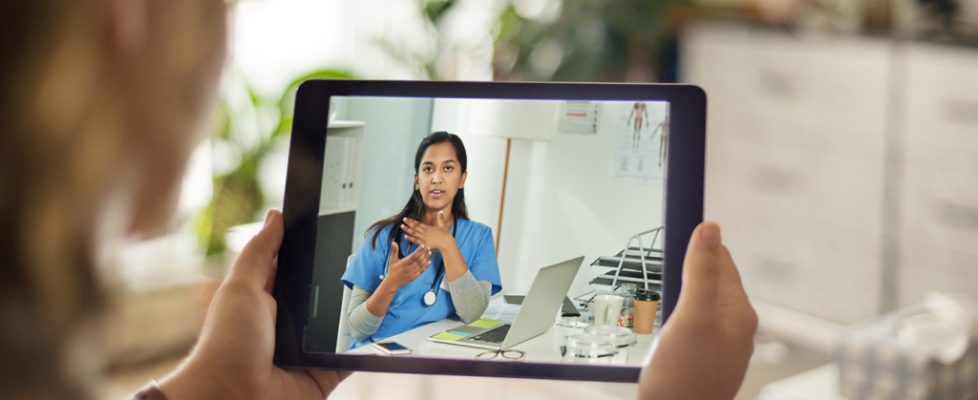Virtual Doctors Add Eye Exams, Mental Health Under Trump Order (1)
Doctors treating patients virtually can provide new services like eye exams and certain mental health visits after the pandemic subsides under an executive order announced Monday.
As part of the order, the Agriculture Department and Federal Communications Commission are partnering to boost broadband access to rural communities, bolstering telehealth efforts beyond the pandemic.
The telehealth order offers some peace of mind to both doctors and patients. The move boosts treatment options for patients in rural areas who might have to drive miles for treatment. It also brings certainty to doctors who feared that some of the telehealth practices allowed under temporary orders would be considered fraud when the public health emergency is over.
“Telehealth can never fully really replace the gold standard of in-person care, but it can certain do is complement in-person care,” Centers for Medicare & Medicaid Services Administrator Seema Verma told reporters.
The pandemic vastly altered how people access their doctors. About 43% of health centers offered telehealth services in 2018, according to the Department of Health and Human Services. Now more than 90% of facilities offer them, “and about half of health center visits during the pandemic have been virtual,” HHS Secretary Alex Azar wrote in an op-ed last week.
While the new order aims to permanently expand the types of services provied virtually, regulators can’t permanently change which providers can use it and where patients can access it, Verma said. During the pandemic, patients could access their health care provider from their home, but making that sort of set-up permanent would require Congressional action, Verma said.
Regulators will have to ensure patients’ data will be safe. Health insurers might also have to reconfigure their payment models for doctors who see patients virtually. Major health-care commercial insurers like Aetna, Cigna, Blue Cross Blue Shield, Humana, and United Healthcare typically cover telehealth, but these virtual services don’t always pay providers at the same rate as in-person care.
The HHS plans to use data from this temporary expansion of telehealth in Medicare to challenge assumptions, including that it costs too much and leads to too much utilization, Azar told reporters.
The order also includes a new program to give rural communities “seed money” to rethink how their health-care systems are organized and consider moving to paying doctors for outcomes rather than the number of services provided, Verma said.
The order also requires a White House report looking at policies to reduce maternal mortality, improve mental health in rural communities, develop efforts to improve health outcomes in rural areas, and get rid of regulations that limit the availability of health-care providers.
Permanent Medicaid Telehealth Unclear
State Medicaid plans also expanded their telehealth options, but it’s not clear yet if states will make those permanent once the public emergency ends, MaryBeth Musumeci, associate director at the Kaiser Family Foundation’s program on Medicaid and the uninsured, said.
“We’ve heard anecdotally that the pandemic has pushed telehealth forward faster than it otherwise would have moved, and there is some interest in states keeping some of the changes they’ve found helpful longer term,” Musumeci said.
Most of the changes were made through emergency authorities because it was faster. To make telehealth changes permanent, states would have to take additional steps. It’s possible, but it would take longer, she said.
The HHS is already looking for Congressional input for additional steps beyond those states take. Last week, Azar acknowledged that some changes require statutory changes only Congress can make.
“We’re working with members of both parties on that already,” he wrote.

